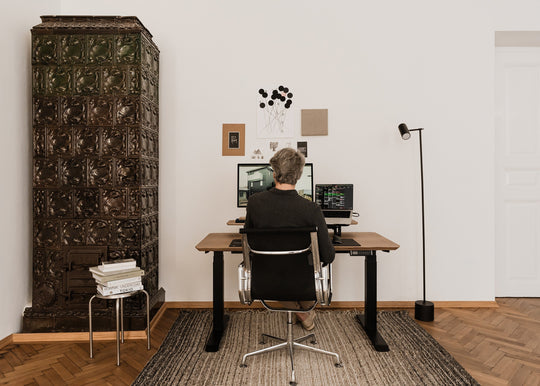
Inklusive Ergonomie. Wie schafft man Produkte, die für alle geeignet sind?
“Jack of all trades, master of none” – are all efforts to design products that fit the widest range of consumers doomed to fail? To get to the bottom of this, we must first answer the most pressing question: what is inclusivity and how can you apply it to designing functional products for everyone, regardless of gender, age, or height? Ergonomics should, after all, be universally accessible, right?

Photo by Jonathan Kemper on Unsplash
Men and women versus ergonomics – diverse needs
As a continuation of our women-themed series, we wish to focus on the circumstances and needs of a group that is often underrepresented and overlooked in many fields. In her book Invisible Women, Caroline Criado-Perez writes at length about the everyday neglect of women-specific needs in industries such as architecture, transport, space management, and work equipment, but also medicine and pharmacology. Unfortunately, this continuous oversight can end tragically, especially when it comes to diagnostics and treatment of health issues.
Back to the topic of ergonomics and tailoring workspaces to fit diverse needs. Although women are often shorter than men (which is reflected in, for example, the recommended desk or chair height), it is important to note that they are not simply ‘smaller men’ – they have distinct muscle memory and different sources of pain or discomfort. An important difference lies in the situation of the center of gravity, which for women lies around the pelvis area, whereas for men it is located at chest level. This means that while sitting, a woman’s pelvis and lower back are in a different position than a man’s, which should be taken into account when choosing an office chair or any alternative seat.
According to Dr. Delia Treaser, an ergonomics specialist, sensory differences are hugely significant – smell, hearing, but especially sight. Women have a better visual memory and see better in the dark, as opposed to men who thrive in bright light. Because of the differences in retina anatomy, women have wider peripheral vision to men who, in turn, have a better sense of perspective. Additionally, women are more sensitive to sounds and smells. Having this knowledge is extremely helpful in creating an ergonomic workspace; one that is comfortable, devoid of unnecessary distractions, and therefore conducive to healthy productivity.
What is inclusive design?
The general differences between men and women are not all there is – every person is an individual with their own unique set of characteristics that need to be considered when choosing furniture, accessories, or work equipment. This is why inclusivity is so important in designing products: their design should answer a wide array of needs so that everyone has equal access to functional solutions.
The seven Principles of Universal Design pioneered by the Center for Universal Design at North Carolina State University in 1997 are an incredibly useful resource when searching for inclusive design tips. They are as follows:
- Equitable Use – design solutions should guarantee accessibility for people in different circumstances.
- Flexibility in Use – design should ensure its solutions can be adapted for the most diverse individual needs and preferences.
- Simple and Intuitive – design should be ‘understandable’, so that its user can benefit from the solutions regardless of their experience, knowledge, language proficiency, or ability to focus.
- Perceptible Information – design should effectively communicate important information so that its user retains them regardless of their current environment or sensory abilities.
- Tolerance for Error – design should limit the risk of negative chance consequences and unintentional user activity.
- Low Physical Effort – design should be effective and comfortable to use without the need for excessive physical effort.
- Size and Space for Approach and Use – design should consider the optimal parameters for people of different sizes, stature, and mobility to benefit from its solutions.
One example of inclusive design is an adjustable desk that allows you to change not only your position but also adapt its height to users of different sizes and needs, for example, wheelchair users. A new ergonomic solution we introduced at Oakywood is a set of wheels for our Standing Desk – they can be screwed on and allow the desk to be easily moved and parked in a new place by applying the brakes.

Photo by Thought Catalog on Unsplash
How to tailor office accessories and furniture to suit different people?
A well-designed and ergonomic workspace aids productivity while simultaneously taking care of your health and well-being. Regardless of whether you work remotely at home, operate within a hybrid model, or spend your workday in a traditional office – creating a workstation that answers the individual needs of its user simply makes sense.
Diversity awareness itself allows us to search for better solutions: the chair should fit the person, not the other way around. The first step in following this strategy is, therefore, getting to know your own needs and expectations, but also recognizing your limitations and any risk of developing problems down the line. You can then confidently determine what characteristics make for the most ergonomic option.
Being able to customize your products is, understandably, a huge advantage – yes, we are promoting our 3D configurator again! This simple and intuitive tool allows you to modify our desks and selected accessories so that they fit your functional and aesthetic requirements: you can choose their color, wood type, and measurements. With just a few clicks, you can take a huge step towards inclusive ergonomics.









